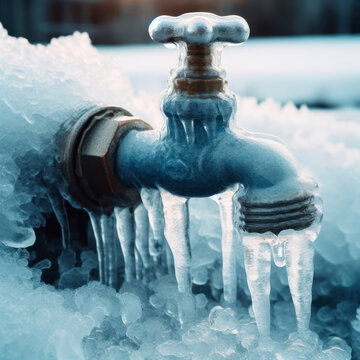Do you find yourself looking for suggestions on 6 Ways to Prevent Frozen Pipes?

Winter can wreak havoc on your plumbing, particularly by freezing pipelines. Below's just how to stop it from occurring and what to do if it does.
Introduction
As temperature levels decline, the danger of icy pipelines increases, possibly resulting in expensive repair work and water damages. Comprehending just how to avoid frozen pipelines is crucial for property owners in cool climates.
Avoidance Tips
Insulating vulnerable pipelines
Wrap pipes in insulation sleeves or utilize warmth tape to secure them from freezing temperatures. Focus on pipelines in unheated or external areas of the home.
Home heating methods
Maintain interior rooms properly heated, especially areas with plumbing. Open cupboard doors to enable cozy air to distribute around pipes under sinks.
Just how to determine frozen pipelines
Search for reduced water circulation from taps, unusual smells or sounds from pipes, and noticeable frost on exposed pipelines.
Long-Term Solutions
Structural changes
Think about rerouting pipelines away from outside wall surfaces or unheated locations. Include added insulation to attic rooms, cellars, and crawl spaces.
Upgrading insulation
Invest in premium insulation for pipelines, attic rooms, and wall surfaces. Proper insulation helps preserve regular temperature levels and lowers the risk of icy pipelines.
Protecting Outside Pipes
Yard hoses and outside faucets
Detach and drain pipes yard hose pipes prior to wintertime. Set up frost-proof spigots or cover exterior taps with shielded caps.
Comprehending Icy Pipes
What causes pipelines to freeze?
Pipes ice up when subjected to temperature levels below 32 ° F (0 ° C) for prolonged durations. As water inside the pipelines freezes, it expands, taxing the pipe wall surfaces and potentially creating them to rupture.
Threats and damages
Icy pipelines can cause water system disruptions, property damage, and costly repairs. Burst pipes can flood homes and cause substantial architectural damage.
Indications of Frozen Piping
Identifying icy pipelines early can prevent them from bursting.
What to Do If Your Pipelines Freeze
Immediate activities to take
If you believe frozen pipes, maintain taps open up to eliminate pressure as the ice melts. Use a hairdryer or towels taken in warm water to thaw pipes slowly.
Final thought
Stopping frozen pipelines requires aggressive procedures and quick actions. By understanding the causes, indications, and preventive measures, home owners can secure their pipes throughout winter.
6 Proven Ways to Prevent Frozen Pipes and Protect Your Home
Disconnect and Drain Garden Hoses
Before winter arrives, start by disconnecting your garden hoses and draining any remaining water. Close the shut-off valves that supply outdoor hose bibs and leave the outdoor faucet open to allow any residual water to drain. For extra protection, consider using faucet covers throughout the colder months. It’s also important to drain water from any sprinkler supply lines following the manufacturer’s directions.
Insulate Exposed Pipes
Insulating your pipes is an effective way to prevent freezing. Pipe insulation is readily available at home improvement stores and is relatively inexpensive. Pay close attention to pipes in unheated areas such as the attic, basement, crawl spaces, or garage. Apply foam insulation generously to create a buffer against the cold. You can also wrap your pipes in heat tape or thermostat-controlled heat cables for added warmth.
Seal Air Leaks
Inspect your home for any cracks or openings that could let in cold air. Seal any holes around the piping in interior or exterior walls, as well as the sill plates where your home rests on its foundation. Additionally, make sure to keep your garage door closed unless you’re entering or exiting. Leaving it open creates a significant air leak that can lead to frozen pipes.
Allow Warm Air Circulation
During cold snaps, it’s essential to allow warm air to circulate evenly throughout your home. Leave interior doors ajar to promote better airflow. Open kitchen and bathroom cabinets to help distribute heat consistently around the rooms. If you have small children or pets, be sure to remove any household chemicals or potentially harmful cleaners from open cabinets for safety.
Let Faucets Drip
A small trickle of water can make a big difference in preventing ice formation inside your pipes. When temperatures drop significantly, start a drip of water from all faucets served by exposed pipes. This continuous flow helps prevent the water from freezing. Additionally, running a few faucets slightly can relieve pressure inside the pipes, reducing the chances of a rupture if the water inside does freeze.
https://choateshvac.com/6-proven-ways-to-prevent-frozen-pipes-and-protect-your-home/

Hopefully you liked our post about 6 Ways to Prevent Frozen Pipes. Thank you for taking a few minutes to read through our blog post. Sharing is nice. Who knows, you may be helping someone out. Thanks for your time. Revisit us soon.
Get Quote Now